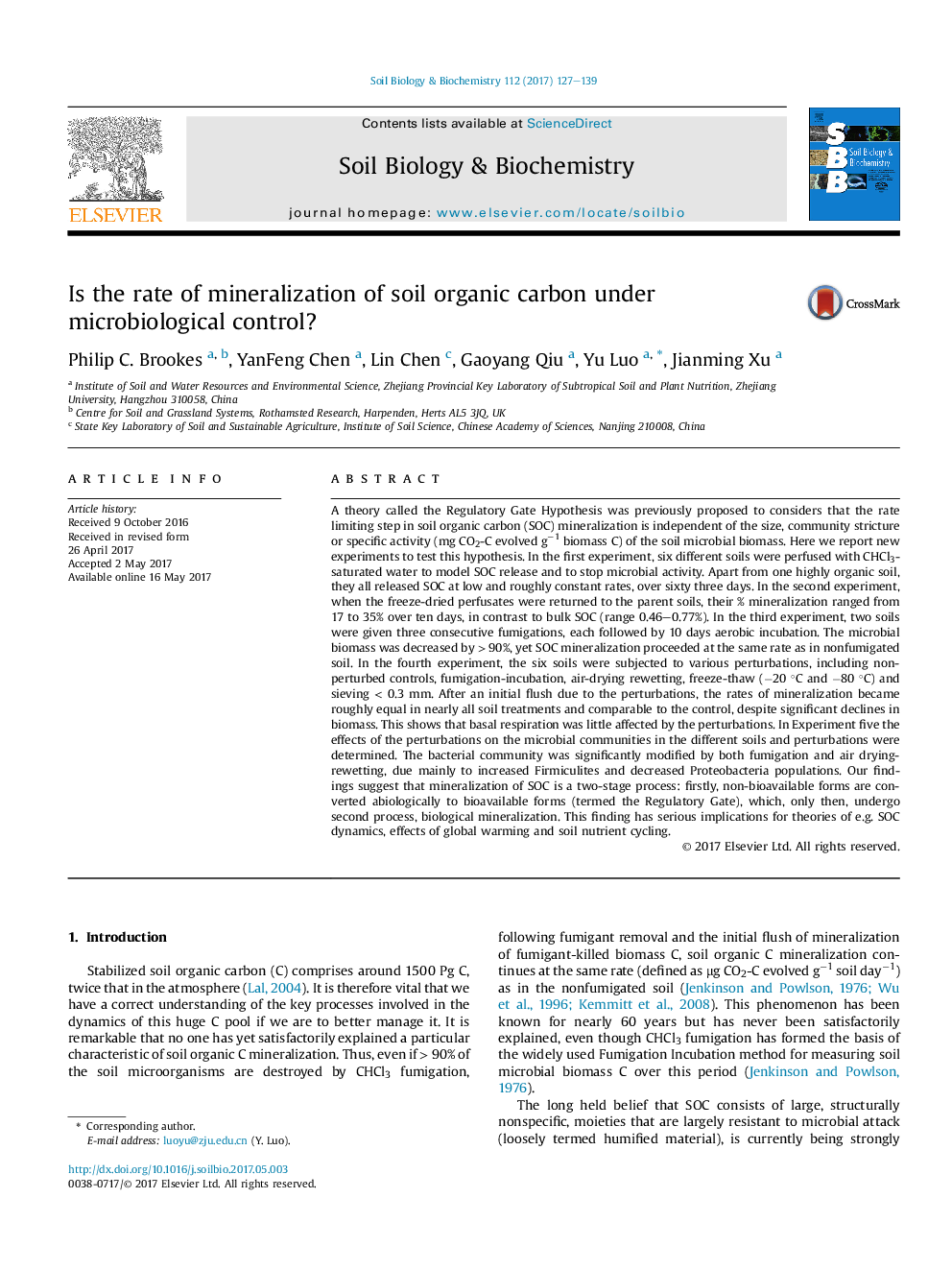| کد مقاله | کد نشریه | سال انتشار | مقاله انگلیسی | نسخه تمام متن |
|---|---|---|---|---|
| 5516344 | 1542572 | 2017 | 13 صفحه PDF | دانلود رایگان |
- CHCl3 fumigation killed >90% of microbial biomass. SOC mineralization unaffected.
- CHCl3 greatly changed biomass, community structure and biomass specific activity.
- Suggests SOC mineralization rate independent of biomass size and structure while accessibility of microorganisms is limited.
- Suggests rate limiting step in SOC mineralization is abiotic.
A theory called the Regulatory Gate Hypothesis was previously proposed to considers that the rate limiting step in soil organic carbon (SOC) mineralization is independent of the size, community stricture or specific activity (mg CO2-C evolved gâ1 biomass C) of the soil microbial biomass. Here we report new experiments to test this hypothesis. In the first experiment, six different soils were perfused with CHCl3-saturated water to model SOC release and to stop microbial activity. Apart from one highly organic soil, they all released SOC at low and roughly constant rates, over sixty three days. In the second experiment, when the freeze-dried perfusates were returned to the parent soils, their % mineralization ranged from 17 to 35% over ten days, in contrast to bulk SOC (range 0.46-0.77%). In the third experiment, two soils were given three consecutive fumigations, each followed by 10 days aerobic incubation. The microbial biomass was decreased by > 90%, yet SOC mineralization proceeded at the same rate as in nonfumigated soil. In the fourth experiment, the six soils were subjected to various perturbations, including non-perturbed controls, fumigation-incubation, air-drying rewetting, freeze-thaw (â20 °C and â80 °C) and sieving < 0.3 mm. After an initial flush due to the perturbations, the rates of mineralization became roughly equal in nearly all soil treatments and comparable to the control, despite significant declines in biomass. This shows that basal respiration was little affected by the perturbations. In Experiment five the effects of the perturbations on the microbial communities in the different soils and perturbations were determined. The bacterial community was significantly modified by both fumigation and air drying-rewetting, due mainly to increased Firmiculites and decreased Proteobacteria populations. Our findings suggest that mineralization of SOC is a two-stage process: firstly, non-bioavailable forms are converted abiologically to bioavailable forms (termed the Regulatory Gate), which, only then, undergo second process, biological mineralization. This finding has serious implications for theories of e.g. SOC dynamics, effects of global warming and soil nutrient cycling.
Journal: Soil Biology and Biochemistry - Volume 112, September 2017, Pages 127-139
